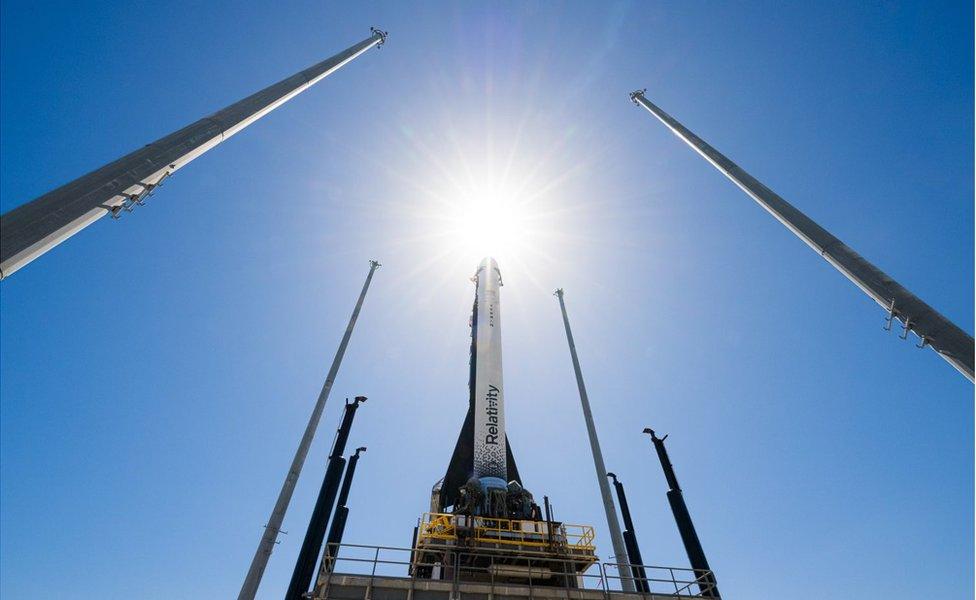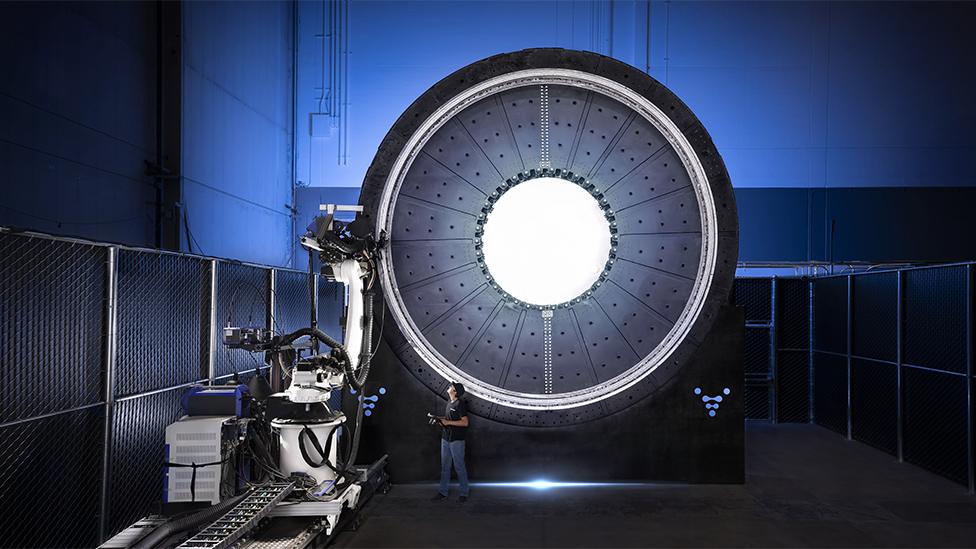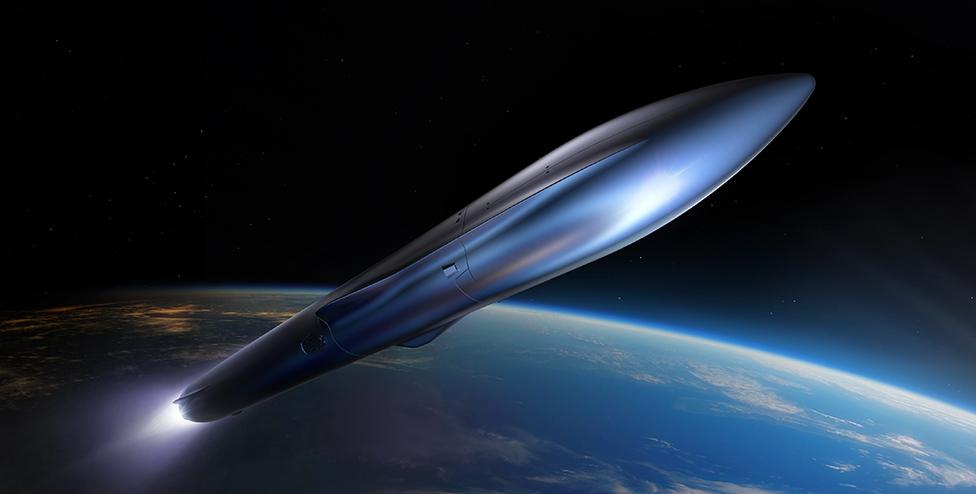3D printed rocket takes to the sky over Florida
- Published
Watch: 3D-printed rocket lifts off but fails to reach orbit
An almost fully 3D-printed rocket has taken flight for the first time.
Terran-1 left its launch pad in Cape Canaveral in Florida and powered skyward for a few minutes before falling back to Earth.
Some 85% of the vehicle, which is 112ft (34m) tall, was produced using additive manufacturing techniques (3D printing).
The aerospace industry uses these processes to make all manner of components but their application in Terran-1 is on a different scale.
California-based Relativity Space, which produced the rocket, has designed its own machines to fabricate both large and small parts, from tanks to engines.
The company said its eventual goal was to have more than 95% of the rocket 3D printed.
The items currently still being made using standard techniques comprise mostly electronics, computer chips, rubber seals and valves.
Terran-1 launched from Complex 16 at Canaveral's US Space Force Station at 23:25 local time on Wednesday (03:25 GMT on Thursday).
Its lower segment, or first stage, burned for just over two-and-a-half minutes. The second stage should then have taken over to complete the journey to orbit but, after a few flickers, it died. The upper part of the rocket would have come down in the Atlantic Ocean.

Terran-1 is a prototype for a much larger rocket
Despite not completing a full mission, the flight nonetheless represents a significant achievement for Relativity Space.
It is not uncommon to experience a failure on a maiden flight and the company will have acquired a wealth of data for future launches.
The stated first objective was to get through what is termed Max-Q. That is the point early in a launch where the aerodynamic pressure and other forces on a vehicle are at their greatest. Passing this mark established the integrity of the rocket's 3D-printed components.
"This is the biggest proof point for our novel additive manufacturing approach," the company later tweeted.
"Today is a huge win, with many historic firsts," it added. "We also progressed through main-engine cut-off and stage separation. We will assess flight data and provide public updates over the coming days."
The launch was also noteworthy because liquid methane was used as the fuel. Many other rockets will use it in the future, not least because it burns more cleanly than some current propellants of choice, such as kerosene.

Relativity Space has developed its own immense 3D printers
3D printing - building up the shapes of objects by fusing layers of aluminium powders or beads - enables complex designs to be fashioned in one piece, without the need for intricate tooling.
It also allows for rapid iteration of designs, should they require updating, and it cuts down on wasted raw materials.
Relativity Space said the Terran-1 had a little over 3,000 individual parts and believed it could get this number under 1,000 over time.
In terms of size and performance, Terran-1 is a modest vehicle capable of putting one-and-a-quarter tonnes of satellite payload into a low-Earth orbit. But it is really just a testing prototype.
The company has a much larger rocket on the drawing board that it calls Terran-R, with the capacity to put 20 tonnes at a similar altitude.
Unlike its pathfinder, Terran-R will be fully reusable. Both of its sections will be landed back on Earth and reassembled to fly again - much like the Starship system soon to launch from the industry's leading player, SpaceX.

Artist's design: Relativity Space has had strong interest in its Terran-R concept
Terran-R could make its debut in 2025.
The interest in Relativity Space and its approach to rockets is considerable.
It has signed future launch commitments with satellite operators worth more than $1.2bn (£0.97bn).
This includes an agreement with the London-based satellite broadband provider OneWeb.
The UK firm wants to use Terran-R to help put its next generation of spacecraft in orbit.
Massimiliano Ladovaz, chief technical officer at OneWeb, said the Relativity Space operation was very impressive, adding that with rocket rides at a premium right now it made sense to consider launch providers beyond the established players.
"Sometimes in this industry you have to make bets, controlled bets. Relativity has a solid technical team, with actually a lot of expertise from people who were formally with SpaceX," he told BBC News.
